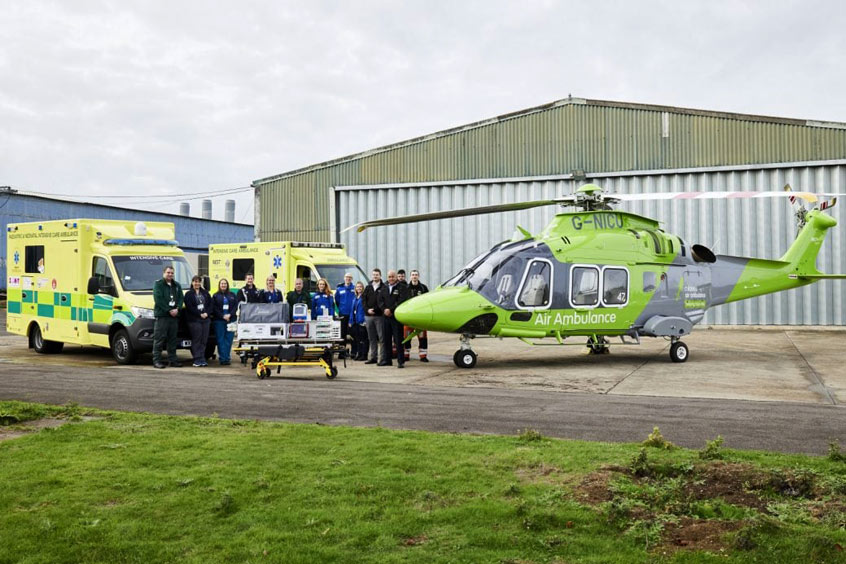ACE 2026 - The home of global charter.
 The bimonthly news publication for aviation professionals.
The bimonthly news publication for aviation professionals.

UK aeromedical charity Children's Air Ambulance (TCAA) has introduced England's first incubator on a rotary wing aircraft to assist specialist NHS transport teams during lifesaving flights.
The charity collaborated with Gama Aviation's Part 21J Design Organisation, as well as leading neonatal transfer clinicians, on a bespoke design, bringing three Neonatal Transport Systems on board its brand new AgustaWestland 169 aircraft provided by Sloane Helicopters. Together with International Biomedical, Gama produced a UK CAA approved 21J design that enables the transfer of critically ill babies and children from local hospitals to specialist paediatric and neonatal treatment centres at high speed. TCAA, part of The Air Ambulance Service, is the only operator in the country to provide this dedicated service.
Gama head of design Paul Bristow says: “We are delighted to have been part of this project with TCAA. Gama has been able to utilise its specialist skills in air ambulance design and modification, which has ensured that neonatal patients can be transferred across the country in the quickest and safest way possible, ultimately saving the lives of our little ones. We look forward to continuing to provide design and modification support to TCAA in the future.”
The national transfer service provides the only intensive care aircraft in the country dedicated to transferring critically ill babies and children, at a high and safe speed, from local hospitals to specialist paediatric and neonatal treatment centres.
Thanks to the support of public donations, the charity has designed and developed three bespoke neonatal transport systems that have been provided to specialist NHS transport teams free of charge across England. They integrate seamlessly with the charity's stretcher system and are a vital piece of equipment that really comes into its own when paired with TCAA's new AW169 aircraft. The large cabin interior allows access to both sides of the neonatal transport system, and with excellent visibility from all four seats, it means more specialist eyes can monitor the patient as well as the parent, and a parent doesn't have to move if a clinician needs access to care for their child.
The helicopter also has plentiful medical air and oxygen supplies, and easily controllable heat and light levels. The onboard power reduces the reliance on batteries, making it a very efficient enhancement to the national service.
“Having the incubators will mean we can fly many more babies than we currently can. Before now, we were unable to safely use the helicopter to transfer our smaller infants, who need higher levels of support. This incubator means we will be able to get the smaller, more fragile babies to the specialist services they need more quickly, reducing the anxiety and worry of the parents, and ultimately reducing the time taken for the infants to get the specialist support they need," says Bristol's Newborn Emergency Stabilisation and Transfer lead nurse Patrick Turton.